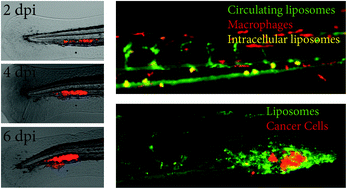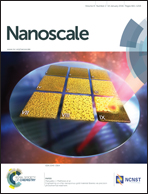Zebrafish as a model system for characterization of nanoparticles against cancer†
Abstract
Therapeutic nanoparticles (NPs) have great potential to deliver drugs against human diseases. Encapsulation of drugs in NPs protects them from being metabolized, while they are delivered specifically to a target site, thereby reducing toxicity and other side-effects. However, non-specific tissue accumulation of NPs, for example in macrophages, especially in the spleen and liver is a general problem with many NPs being developed for cancer therapy. To address the problem of non-specific tissue accumulation of NPs we describe the development of the zebrafish embryo as a transparent vertebrate system for characterization of NPs against cancer. We show that injection of human cancer cells results in tumor-like structures, and that subsequently injected fluorescent NPs, either made of polystyrene or liposomes can be imaged in real-time. NP biodistribution and general in vivo properties can be easily monitored in embryos having selective fluorescent labeling of specific tissues. We demonstrate in vitro, by using optical tweezer micromanipulation, microscopy and flow cytometry that polyethylene glycol (PEG) coating of NPs decreases the level of adhesion of NPs to macrophages, and also to cancer cells. In vivo in zebrafish embryos, PEG coating resulted in longer NP circulation times, decreased macrophage uptake, and reduced adhesion to the endothelium. Importantly, liposomes were observed to accumulate passively and selectively in tumor-like structures comprised of human cancer cells. These results show that zebrafish embryo is a powerful system for microscopy-based screening of NPs on the route to preclinical testing.


 Please wait while we load your content...
Please wait while we load your content...